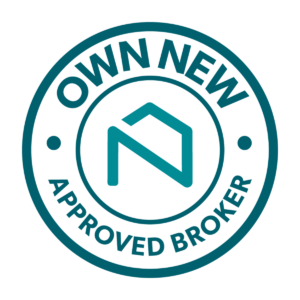The Top 5 Mortgage Options for Buy-to-Let Investors in 2025

Buy-to-let property remains to be one of the most popular choices for investors in 2025, offering opportunities for steady rental income and long-term capital growth.
With the rise in rental demand, securing the right buy-to-let mortgage has become a smart way to build income and grow your property portfolio.
But with so many lenders, mortgage products, and interest rates on the market, you might be asking: which mortgage options are the best buy-to-let investments, and what are the requirements for a buy-to-let mortgage?
In this article, we cover everything you need to know about the top five mortgage options for buy-to-let investors in 2025. Let’s get started.
- 1. Five-Year Fixed-Rate Buy-to-Let Mortgages
- 2. Two-Year Fixed Rate Buy-to-Let Mortgages
- 3. Limited Company or SPV Buy-to-Let Mortgages
- 4. HMO and Multi-Unit Buy-to-Let Mortgages
- 5. Green or Energy-Efficient Buy-to-Let Mortgages
- Key Considerations for Buy-to-Let Mortgages in the UK
- Frequently Asked Questions
- Can a Mortgage Broker Help Buy-to-Let Investors?
1. Five-Year Fixed-Rate Buy-to-Let Mortgages
The standout feature of a 5 year buy-to-let fixed rate mortgage is that it can offer landlords stability and predictable repayments over a longer (5 year) term.
The big question with interest rates is how they may fluctuate in the future. Should rates rise, fixing your mortgage for five years can provide you with the peace of mind that any increases won’t disrupt the management of your buy-to-let investments.
For example:
- Your interest rate is set at 5% for the entire five-year term.
- If your monthly repayment is £1,000, this amount remains the same throughout the term.
- Even if market interest rates rise to 6% or higher, your repayment does not change, giving you predictable cash flow.
Five-year fixed-rate mortgages are most popular with investors who want to maintain consistent cash flow and plan ahead without worrying about sudden interest rate changes. This makes it easier to account for any rental income against expenses, and can help landlords protect their profit margins.
Should I Fix My Mortgage for 5 Years?
As we highlighted above – fixing your mortgage for five years can offer significant advantages. Most notably, it can help protect against any rising interest rates and provide the flexibility to plan cash flow more reliably. Both of these advantages can be incredibly useful if you’re managing multiple properties, or building a long-term buy-to-let investment portfolio.
However, whether a five-year fixed term is the right mortgage deal for you will wholly depend on your personal circumstances. Ultimately, your current finances, future investment plans, and chosen lender will all play a critical role in deciding which mortgage option matches your requirements.
For these reasons, some landlords may prefer a shorter 2-year fixed term, particularly if you anticipate remortgaging, expanding your portfolio, or want to take advantage of any potential changing interest rates.
If you’re unsure whether a five-year fixed rate mortgage is the right choice for you, working with a trusted mortgage broker like Boon Brokers can help make the decision easier. As a fee-free, whole-of-market mortgage broker, our dedicated mortgage experts will guide you through every option available, compare potential rates, and show you exactly what’s possible based on your goals and investment strategy.
See What Our Clients Have To Say...
2. Two-Year Fixed Rate Buy-to-Let Mortgages
A 2-year fixed rate buy-to-let mortgage is an ideal investment and mortgage option for landlords who are looking for flexibility and to potentially capitalise on short-term opportunity. These mortgages can often allow you to secure a lower initial interest rate, while allowing you to keep your options open for future refinancing.
Ultimately, with a shorter commitment period, you can adapt quickly to market changes or take advantage of new deals as they arise. But what does this look like in practice?
Due to the nature of a shorter term period, a 2 year fixed buy-to-let mortgage allows you to test the market and take advantage of any potential drops in interest rates. It also provides you the freedom to remortgage sooner than with a 5-year longer-term deal.
With that said, this flexibility does come with the risk of higher repayments once the fixed term ends, and so it’s important to factor in your current finance and plan for any increases or dips in cash flow.
As such, when searching for the best 2 year buy-to-let mortgages, it’s crucial to look beyond the headline rate. Consider arrangement fees, product charges, and rental cover requirements. In addition, you will need to look at the lender’s affordability checks closely, as many leading lenders will require the rental income to exceed mortgage payments by a set margin.
When is a Two-Year Fixed Buy-to-Let Mortgage the Best Option?
A two-year fixed buy-to-let mortgage can be the best mortgage option for those who are looking for short-term flexibility and the chance to take advantage of changing market conditions. If you’re expecting interest rates to fall or plan to remortgage in the near future, a two-year fixed mortgage term can help you keep costs lower while staying agile with your investment strategy.
Below we have provided a quick list of when a shorter-term fixed mortgage could be the best option:
- Planning to Remortgage or Sell: If you’re planning to change your mortgage or sell your property in a short-period of time, a two-year fixed term can help avoid locking you into a long commitment.
- Expecting Interest Rates to Fall: Shorter-term deals will let you take advantage of any potential rate drops as you will not be tied into a longer and potentially higher fixed rate term period.
- Expanding Your Property Portfolio: If you’re actively growing or switching your property investments, a shorter term keeps your options open for refinancing or moving onto new purchases.
- Lower Initial Interest Rate: Two-year fixed mortgages can often include cheaper starting rates due to the shorter agreed term time.
- Testing the Rental Market: For new landlords, or if you’re unsure about rental demand or future property performance, a shorter term can also provide a lower-risk way to start your investment.
Overall, a two-year fixed buy-to-let mortgage is ideal for landlords who want short-term flexibility or are planning to adjust their property investments in the next few years. But for a complete and comprehensive comparison of short versus long-term fixed mortgages, read our latest article and guide on: “Should I Choose a 2-Year or 5-Year Fixed Mortgage Rate?”
3. Limited Company or SPV Buy-to-Let Mortgages
Many landlords in 2025 are choosing to purchase property through a limited company, often referred to as a Special Purpose Vehicle (SPV). A buy-to-let mortgage for a limited company can help create a divide between personal and business finances, offering potential tax advantages and making it simpler to manage buy-to-let investments.
An SPV buy-to-let mortgage works much like a standard mortgage, but the property must be owned by a company that is set up specifically for rental purposes. While an individual can run a buy-to-let business, the term SPV usually applies to companies because they must list their business activities on Companies House using SIC codes.
In short: an SPV, or Special Purpose Vehicle, is a business that is created solely to hold property.
This mortgage structure can offer investors with some clear benefits: potential tax advantages, limited personal liability, and simplified portfolio management. For landlords planning to expand or hold several properties, a limited company or SPV buy-to-let mortgage can be a practical way to keep finances organised and maximise long-term returns.
For example:
- Let’s say that your limited company (SPV) owns a buy-to-let property with a monthly rental income of £1,200.
- The monthly mortgage repayment is £700.
- Through this structure, the £700 mortgage interest can be deducted from the rental income before calculating corporation tax.
- As mortgage interest is deducted from limited companies, your SPV will only be taxed on the remaining £500 profit, rather than the full £1,200 rental income. As a result, you could potentially be lowering your overall tax when compared with a standard buy-to-let mortgage.
When it comes to SPV buy-to-let mortgage rates, lenders will typically offer slightly higher interest rates than that of a personal mortgage. This is because lenders will view company borrowing as higher risk. However, it’s important to consider the benefits that can offset this, including: tax efficiency, liability protection, and the flexibility for long-term portfolio planning – all of which can often outweigh the extra cost.
Common Scenario
- Problem: Sarah, wants to expand her property portfolio and has her eyes on the next investment, but is concerned about the potential for higher personal tax liabilities.
- Solution: Working with Boon Brokers, Sarah was able to explore buy-to-let mortgage options designed for limited companies. This allowed her new property to be owned through a company structure, helping her manage tax more efficiently while keeping her personal and business finances separate.
Ultimately, a limited company or SPV buy-to-let mortgage can be a smart move for landlords aiming to grow their property portfolio while keeping their finances structured and tax-efficient.
Working with Boon Brokers, you’ll have access to mortgage advisers who understand the unique needs of buy-to-let investors and can guide you towards the most suitable mortgages for landlords.
4. HMO and Multi-Unit Buy-to-Let Mortgages
Houses in Multiple Occupation (HMOs) and multi-unit properties can provide higher rental income, and 2025 has seen a rise in HMO owners as property investors look to grow their buy to let investments. However, financing these properties requires a very specific loan product as lenders will consider them a much higher risk than a standard single-let home.
A HMO mortgage differs from a typical buy-to-let mortgage in the following ways:
- Lender Criteria: HMO mortgages will usually have stricter eligibility requirements. Many lenders expect landlords to have previous letting experience or own at least one standard buy-to-let property already.
- Property Valuation: Many lenders will assess HMOs differently, sometimes basing valuations on rental income potential rather than market value alone.
- Deposit Size: HMO mortgages are perceived to have a greater risk for lenders. To offset this, many HMO mortgage deals will require a larger deposit which can often be 25% or more.
- Interest Rates: The initial rates for HMO mortgages are generally higher than standard buy-to-let products.
- Licensing and Compliance: HMO properties must meet local council licensing rules and stricter safety regulations. Lenders will require this evidence to accept any mortgage deal.
It’s important to note that when exploring buy-to-let HMO options, lenders will typically require evidence that the projected rental income will comfortably cover any mortgage repayments. In addition, the property must meet all HMO safety and licensing regulations.
| Consideration | Why It Matters | HMO-Specific Impact |
| Tenant Numbers & Layout | Lenders will require minimum occupancy standards and adequate space | Determines eligibility and rental income assessment |
| Licensing & Compliance | Legal requirement for multi-tenant properties | Ensures property meets local authority and fire safety rules |
| Management Complexity | Multiple tenants increase administrative workload | Impacts day-to-day management and tenancy agreements |
| Higher Deposit Requirements | Lenders view HMOs as higher risk | Often 25 – 30% deposit needed, higher than single-let |
| Income Assessment | Lenders assess affordability based on rent | Rental income from all tenants must cover mortgage repayments |
If you’re unsure what’s required, read our latest article to discover how you can get a mortgage with an HMO licence.
5. Green or Energy-Efficient Buy-to-Let Mortgages
Sustainability is fast becoming a key focus within the property market and many tenants are searching for the most energy-efficient and sustainable housing options available. As a result, landlords are quickly turning to green or energy-efficient buy-to-let mortgages to capitalise on this cultural green movement.
But what is a green mortgage, and how does a green buy-to-let mortgage work?
A green mortgage is very similar to a standard buy-to-let mortgage, the main difference is that lenders will also look to assess the property’s environmental performance.
As a result, Green mortgage eligibility will usually depend on the overall Energy Performance Certificate (EPC) rating, with better-rated properties qualifying for preferential rates.
For landlords in 2025, investing in energy-efficient homes can greatly increase tenant appeal, reduce running costs, and help boost long-term property value.
| Feature | Green Mortgages | Standard Buy-to-Let Mortgage |
| Interest Rate | Often lower than standard rates, especially for properties with an EPC rating of B+ | Standard market rates apply |
| Tenant Appeal | Higher appeal to environmentally conscious tenants; may reduce void periods | Neutral appeal; tenant demand depends on location |
| Running Costs | Lower energy bills for tenants, reducing disputes and improving satisfaction | Standard energy costs; no incentive for efficiency |
| Long-Term Portfolio Value | Properties with high EPC ratings may be more attractive for future buyers or refinance | Standard property appreciation; may be less attractive to eco-conscious investors |
| Incentives | Some lenders offer cashback or reduced fees for green properties | Typically no extra incentives |
| Regulatory Readiness | Prepares landlords for upcoming regulations targeting energy-efficient homes | May require retrofitting later to meet standards |
Green buy-to-let mortgages help combine financial advantages with sustainability goals. This can greatly help landlords reduce costs, increase tenant appeal, and enhance portfolio resilience.
At Boon Brokers, our dedicated mortgage experts can help you find the right green mortgage to match your property goals. With whole-of-market access, we compare the latest deals across lenders to ensure you secure a mortgage that truly fits your needs.
Learn about BTL options with expert mortgage advice and guidance.
Book a Free ConsultationKey Considerations for Buy-to-Let Mortgages in the UK
Whatever your investment plans, when applying for a buy-to-let mortgage, there are several important factors landlords should keep in mind.
Here we have created a short checklist of the key considerations that can help make your mortgage application quicker and help you avoid surprises. Key factors to consider include:
- Loan-to-Value (LTV): Keeping a lower LTV usually means better interest rates and lower risk for lenders.
- Fees and Arrangement Costs: Look beyond the initial rate and make sure to compare the total costs, including arrangement fees and product charges.
- Interest Rate Type and Fixed Period: Think about whether you prefer a fixed rate for stability, or a more flexible mortgage structure in order to remortgage in the foreseeable future.
- Rental Cover and Stress Test: Lenders will typically expect your rental income to comfortably exceed your mortgage repayments.
- Property Type: Exact requirements from lenders can vary depending on whether it’s a single-let, HMO, multi-unit property, or part of a larger portfolio.
- Mortgage Structure (Personal vs Company): Borrowing through a limited company or SPV can affect tax efficiency and costs.
- Flexibility and Exit Costs: Check early repayment charges, break clauses, and how easy it will be to remortgage later.
Understanding and keeping each of these points in mind can help you plan your buy-to-let property investments more effectively. Working with a trusted mortgage broker for landlords can also help you save time. At Boon Brokers, our experts will guide you through all the lender’s requirements and make sure that you find the mortgage that suits your plans.
Frequently Asked Questions
Is Becoming a Landlord a Good Investment?
Becoming a landlord can be profitable if approached strategically. Buy-to-let investments can offer steady rental income and potential long-term capital growth. However, the truth is that the returns will wholly depend on property location, management costs, and mortgage terms.
Working with a trusted mortgage broker – like Boon Brokers – can help you explore all of your mortgage options, ensuring that you secure the best mortgage that matches your property and investment goals.
Can I Get a 10-Year Fixed Buy-to-Let Mortgage?
Yes, certain lenders will offer 10-year fixed-rate deals for landlords. These mortgage types can help protect against future rate increases, but usually come with slightly higher rates and longer commitments.
Generally, 10-year fixed mortgages are ideal for investors who are planning to hold property long term and who are looking to prioritise predictable monthly mortgage repayments.
How Do Stress Tests Affect Buy-to-Let Mortgage Approval?
Lenders use stress tests to check that your rental income comfortably exceeds your mortgage repayments, usually by at least 125 – 145%. This test can help lenders confirm that you can afford repayments, even if rates should rise. A higher rental yield or larger deposit can help improve your chances of approval under these affordability assessments.
Can I Remortgage My Buy-to-Let Property Before the Fixed Term Ends?
Yes, but many mortgage agreements will include early repayment charges (ERCs). While remortgaging early can make sense if interest rates drop or your property value increases, it is always best practice to compare potential savings against any ERCs before switching.
Can a Mortgage Broker Help Buy-to-Let Investors?
It’s no secret that navigating the world of mortgages can be complicated, especially in today’s property market. From different lenders, interest rates, products, and everything in-between, many landlords are wondering: Where do I start?
That’s where having a trusted mortgage broker in your corner can make all the difference.
At Boon Brokers, we are a professional, fee-free, whole-of-market mortgage broker that helps landlords find the mortgage deal that matches their goals. Whether you’re purchasing your first rental property or looking to expand an existing portfolio, our dedicated advisers can compare deals from over 100+ lenders to find you competitive rates and flexible terms.
We’ll help take care of your application from start to finish – handling all the paperwork, liaising directly with lenders, and guiding you through every stage of the process.
Contact Boon Brokers today and explore buy-to-let investments in 2025 with an expert mortgage adviser who is ready to help you.
Need Mortgage Advice?
Submit an Enquiry
Kathryn HailesCeMAP
Kathryn Hailes is a CeMAP-qualified mortgage and protection adviser who has been supporting clients with their mortgage needs since 2018. With a wealth of experience across residential and buy-to-let cases, Kathryn specialises in guiding first-time buyers through their mortgage journey.Related Articles
- How Does Being Self Employed Affect A Joint Mortgage?
- Fixed Rate Mortgage
- Advantages Of A Mortgage Broker
- What Is A Shared Equity Mortgage?
- The Mortgage Underwriting Process
- How To Get A Mortgage With A New Job
- Can I Overpay My Mortgage?
- How To Improve Your Chances Of Getting A Mortgage
- Choosing A Mortgage Broker
- Can I Get a Mortgage on Maternity Leave?








